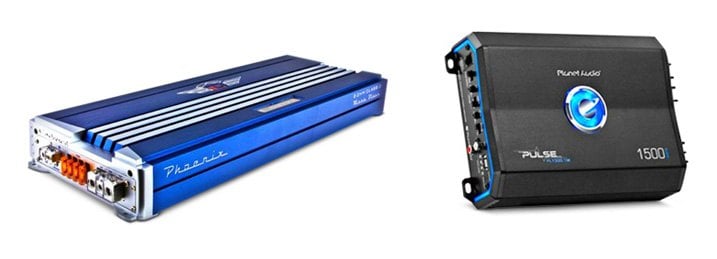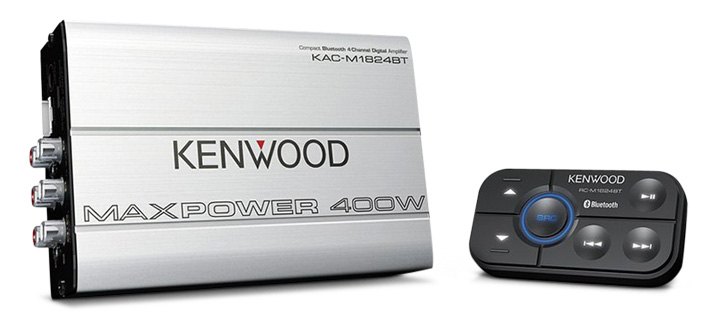If you think car amplifiers are all about the bass, think again. The reality is they boost clarity, creating cleaner sound that lets you hear individual instruments and vocal reverb the way recording artists intended. That's something that any music lover can appreciate.

Stand-alone car amplifiers do all that by adding levels of power that dash-mounted radio receivers just can't deliver. Additionally, you'll gain signal processing ability that may not be present in older radios.
But if booming bass and high volume levels are your thing, that added power lets you go big instead of going home with embarrassing distortion. So if you've upgraded your speakers or added a new subwoofer, the extra juice amplifiers provide will give you the horsepower necessary to get some real volume out of them.
In this article, we'll pinpoint 5 factors that are important to consider when choosing any amplifier.

Number Of "Channels"
The number of "channels" refers to the number of speakers an amplifier is designed to power. A mono amp (see further below) powers 1 single speaker, or it can handle 1-2 subwoofers. Likewise, 2-channel amps are intended for 2-speaker systems, 3-channel amps for 3 speakers, and 4-channel amps for 4-speaker systems.

If you're interested in powering 4 speakers plus a subwoofer, 5-channel amplifiers are your best bet. Amps that have the capacity to be "bridged" permit 2 channels to be combined into 1 for additional boost. This would allow 2 channels of a 4-channel amp to power 2 speakers, with the other 2 channels bridged to a single subwoofer.
Mono Vs. Stereo Amplifiers

Mono amplifiers (also known as "monoblocks") that power 1 speaker have advantages and drawbacks over stereo amps, which power 2 speakers together. Experts consider the use of 2 mono amplifiers for 2 speakers a superior setup compared to a single stereo amplifier powering the same 2 speakers, because all possibility of interference and distortion between channels is eliminated.
Consequentially, a 3-speaker setup would require 3 separate mono amps. A 4-speaker setup would require 4 mono amps, and so on. Since mono amps can typically put out more wattage per speaker, they're a good choice when you need to power larger speakers. They'll also maintain distortion-free clarity between right- and left-side speakers better. There are disadvantages to multiple mono amps: more space and wiring connections are required for them, and they'll draw more power.
Power Ratings

The United States Consumer Electronics Association (CEA) has created uniform standards for stereo equipment ratings. First and foremost, the RMS (root mean square) is the continuous average power output an amplifier can produce without damage. This is the most important number to focus on.
The power rating of the amplifier you select should be based on the RMS rating of the speakers in your vehicle. So if you're faced with a choice, err on the side of overpowering your speakers rather than underpowering them. Speakers are more apt to suffer damage from distortion caused by an overworked, underpowered amp than from too much power. If you've got a small car, you can use an amp with a lower RMS rating and be fine.
Peak power, in watts, is the maximum level of power output an amplifier can sustain for a very short period of time without frying. Since you will not realistically approach this output, peak power isn't as important as RMS.
According to stereo experts, maximum power ratings should not be given as much weight either because your vehicle's standard electrical system probably isn't capable of delivering the power necessary for high-wattage claims.
Amplifier "Class"

Amplifiers are designated a certain "class" based on the design of their circuitry. Class ratings are A, B, A/B, and D - with automotive amplifiers falling into A/B or D categories. Once you've narrowed down your search on our website by how many channels you'd like, you'll be able to select amplifiers rated class A/B or D.
Class A amplifiers offer the highest sound quality, with signals that are the most accurate copies of input due to higher power levels. They're also least efficient because current is always flowing through output transistors. Conversely, output transistors of Class B amps only pass electrical current when audio signals are present. While this makes them the most efficient, it also produces the most distortion.
Class A/B amps, most common in automobiles, are a hybrid of A and B types. Similar to class A amps, current flows continuously at all times. But because speakers are smaller and not as much boost is needed, only a small amount of current flow is necessary. This produces better efficiency than type A, with virtually no distortion.
Class D amps switch their transistors on and off - yielding higher levels of both efficiency and distortion than type A/B amps. The type of distortion generated can be effectively blocked with a filter.
Bluetooth Amplifiers

A Bluetooth amplifier contains a built-in Bluetooth module which allows it to synch up directly with any Bluetooth-enabled wireless device such as a smartphone, iPod, or tablet. Connections to the stereo receiver and to speakers are via traditional wires.
Because Bluetooth amps can connect to your devices directly, the car stereo receiver doesn't need to have that ability. So a traditional, non-Bluetooth car stereo receiver does not need to be replaced in order to enjoy music streaming from your phone. Basically, if you're happy with your non-Bluetooth car stereo, you can keep it. Many Bluetooth amps also come with a microphone that enables hands-free phone calls.
In short, no matter how you like your music served, you're going to love how it sounds once you've got a new amplifier installed. We're confident that following these five important variables will allow you to make the selection that fits your budget, and your vehicle, the best!

